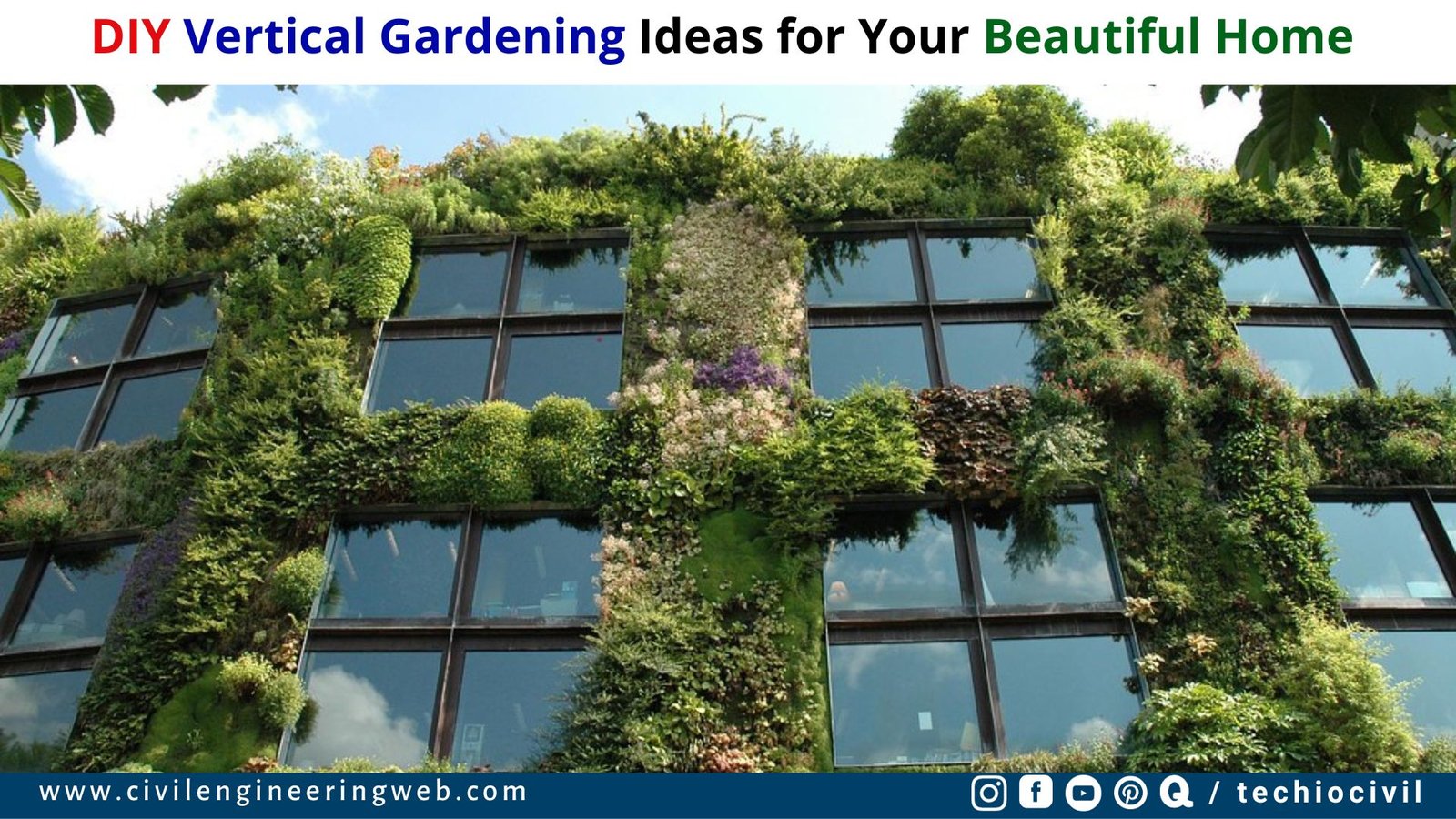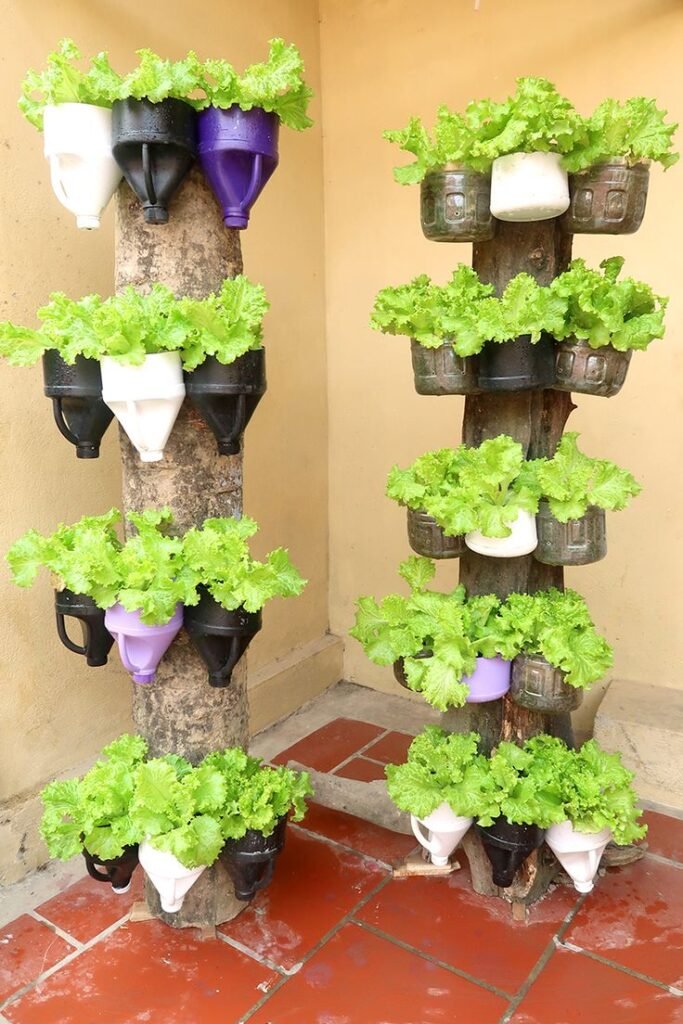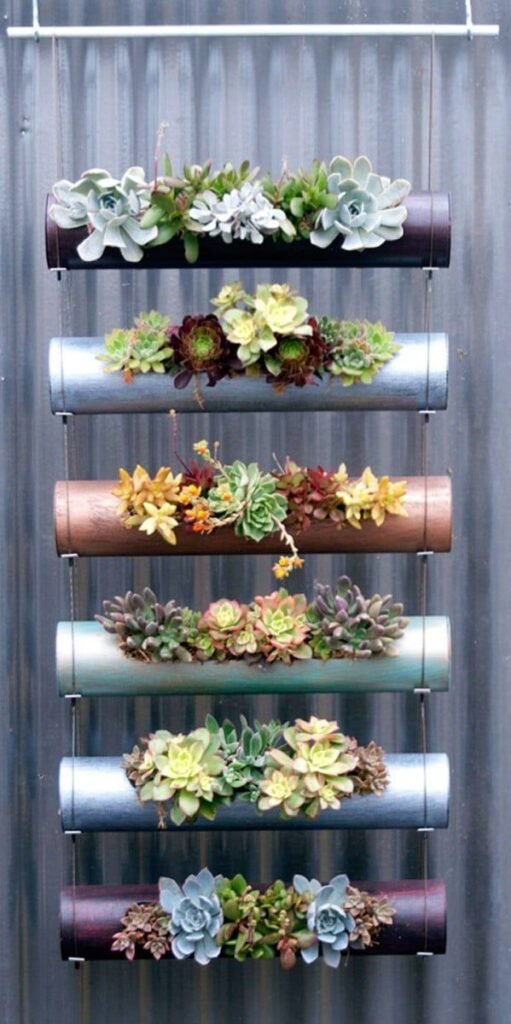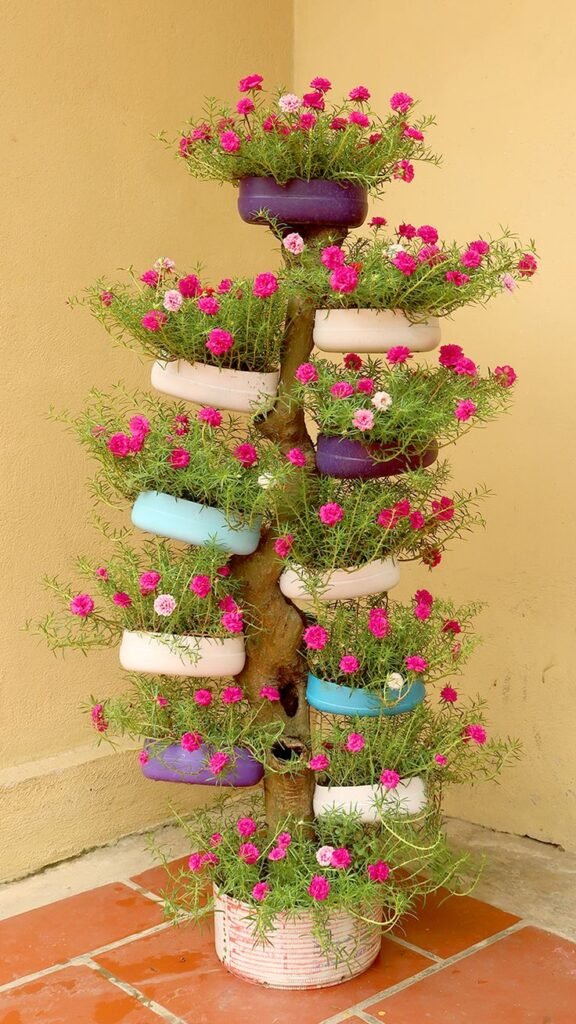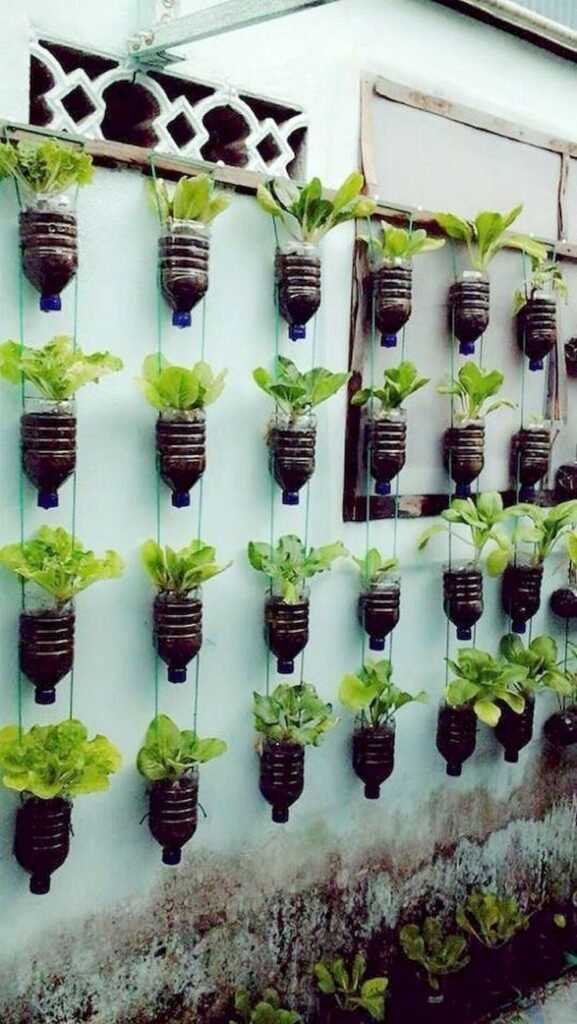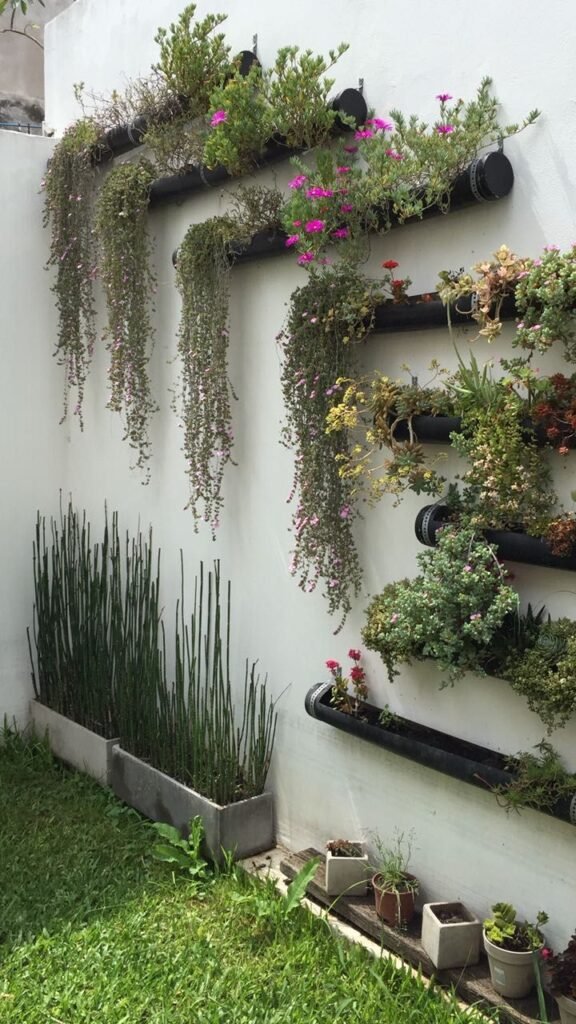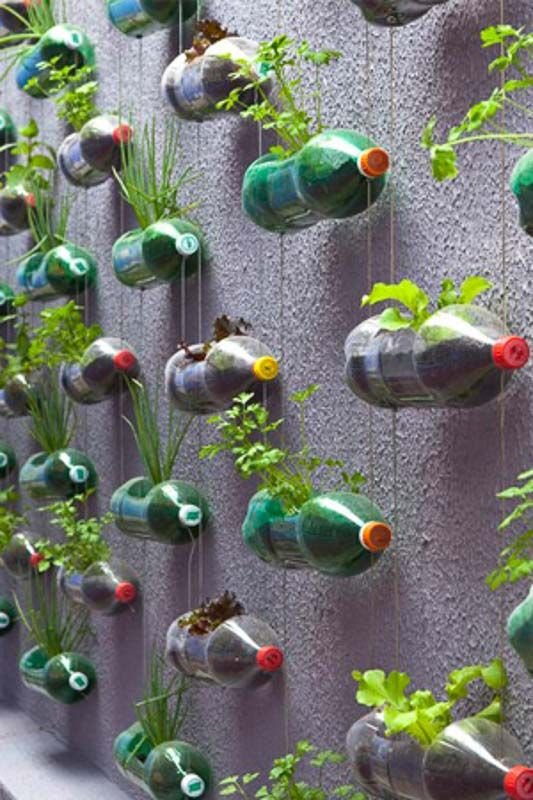Vertical gardening or one type of vertical farming is now become so popular to its lots of advantages and cheaper farming cost. Here we are going to understand what is vertical gardening, advantages of it and how to easily setup at your home to grow your own vegetables and greeneries.
So if you get any valuable information from this article then please share it with your friends. Let’s Start
The continuously decrease in the vegetation of earth and increase of human population affect the quality of life. Especially in the urban area, this problem become too critical due more density of human in small area.
The vertical gardening is the best suitable solution for such problems which highly recommended for buildings in urban area. These emerging type of landscaping’s gives the good esthetical view with reducing the effect of pollution and increasing quality of life.
Table of Contents
What Is Vertical Gardening
Vertical Gardening is the one way to grow plants in vertical arrangement in which plants are grown without need of soil less. Vertical gardening is best suitable way to grow plants in small area, on the roof or wall of building to create healthy and positive environment.
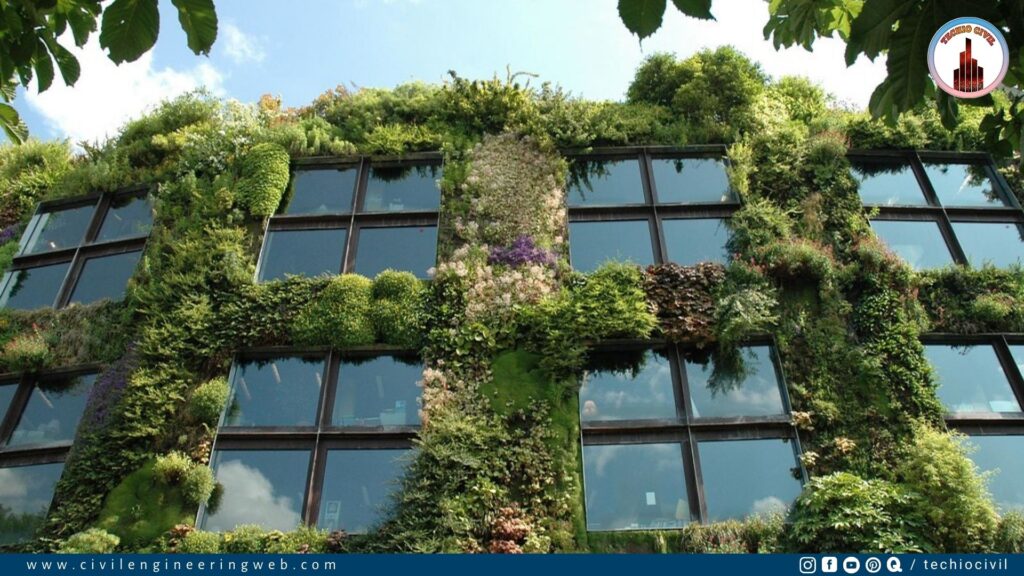
The crops are arranged vertically by the help of module/stacked structure on the wall which is called green wall. This vertical landscaping provide the pleasant and healthy environment in buildings.
Vertical gardening on wall not provide only good esthetical view but also helps to reduce the inner and outer temperature of building by absorbing heat from the air.
The plants are arranged in various types of vertical greening system which are listed and described as below.
Also Read: Best Plants for Outdoor Garden | Outdoor Wall Planters Ideas
Types of Vertical Greening System
- Green Facades
- Green Wall
Green Facades
- Green facades are a type of green wall system in which climbing plants or cascading groundcovers are trained to cover specially designed supporting structures.
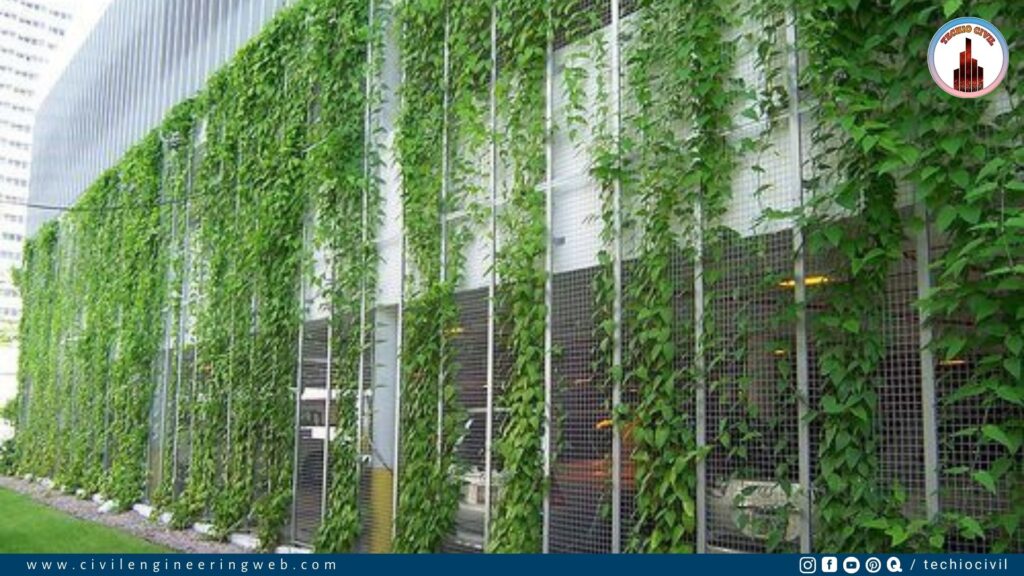
- Plants are either grown in the ground or in the elevated containers where they are watered and fertilized
- Green facades can be anchored to existing walls or built as freestanding structure, such as fences or columns.
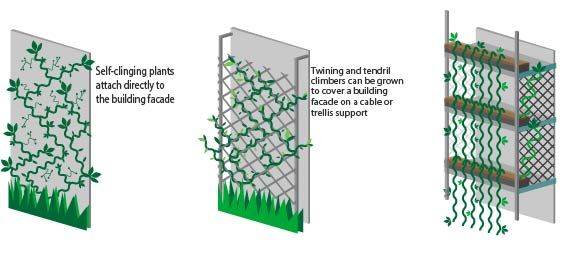
Green Wall
Green Wall system includes the vertical module or planted blankets supported on structural system in which planters made of plastic, polystyrene, or synthetic fabric are situated.
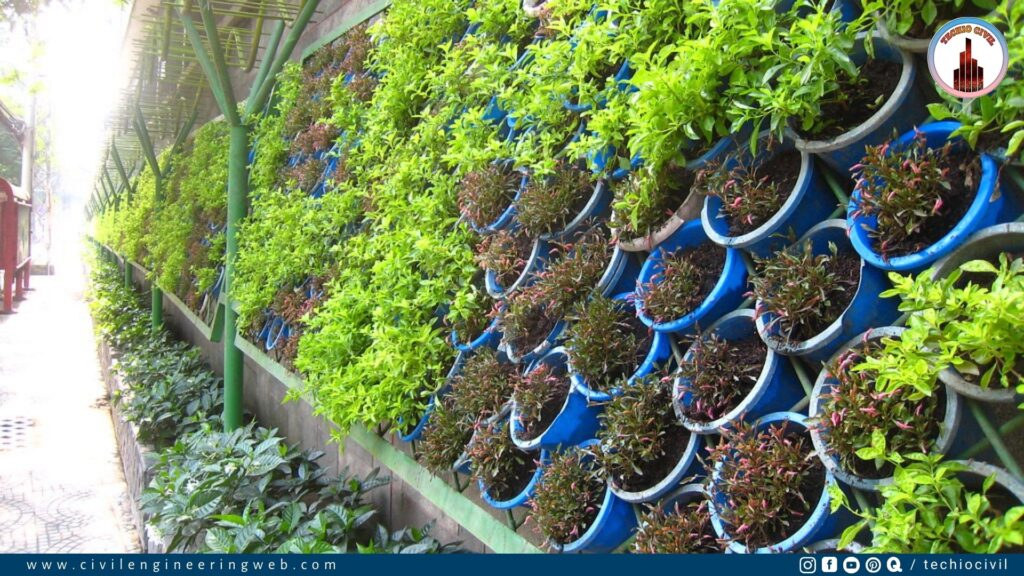
The module structure for gardening provides good aesthetic view, easy to install and having high durability as compared to others.
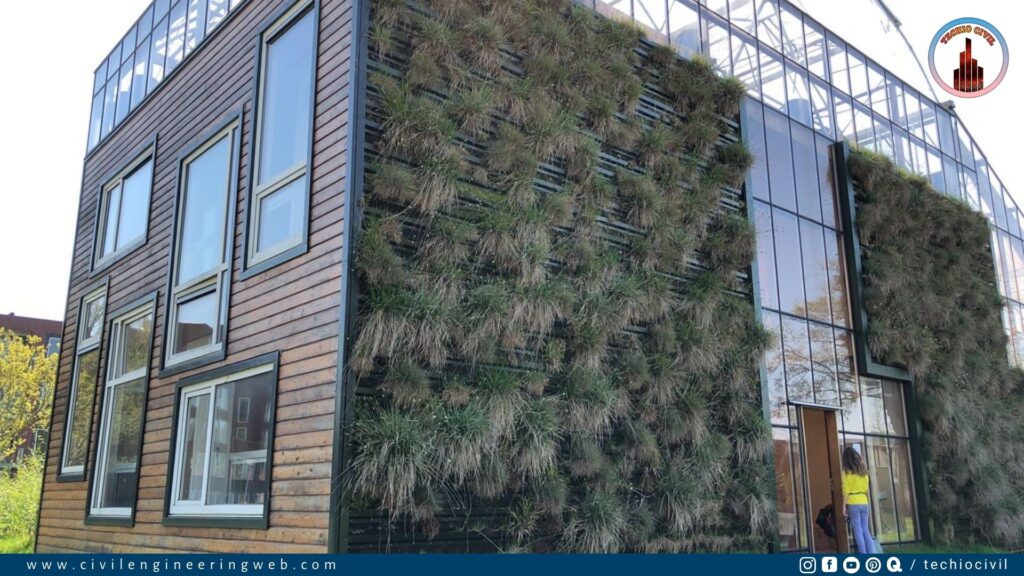
Green wall includes the modular structure in which you can directly place the planters, providing an instant solution for creating a garden in your home.
Also Read: What is Modular Construction | Types of Modular Construction
Green Wall Structure System
The different components of green wall structures system is shown below.
- Front Panel
- Bottom Drainage Tray
- Geo Textile Pouch
- Stabilizers
- Side Panel
- Hanging Hook
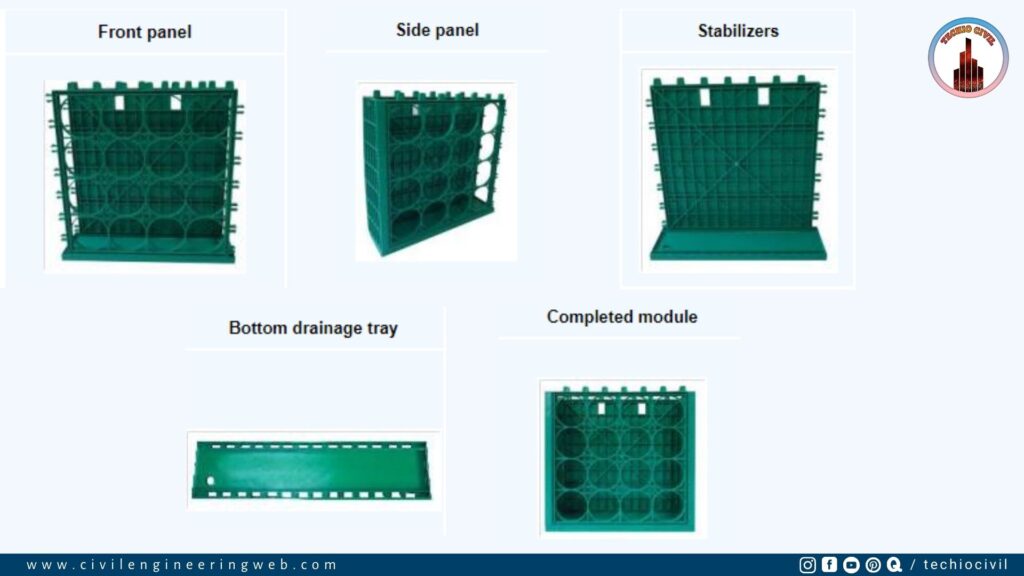
So, these are types of structural system for vertical gardening which is needed to support the planters and filter media.
Let’s see the different types of filter media which is needed to grow the plants.
Growing Media for Vertical Gardening
Growing media is the layer of material which is used to support, hold, and provide good nutrient to plant. The Cocopeat, Perlite, sphagnum moss, vermiculite, vermicompost, shredded bark and leaf molds are the type of material that is used for growing media in Vertical gardening.
Requirements of Growing Media
The ideal requirements of growing media are listed below.
- Growing media should have neutral pH.
- It should have good porosity.
- Growing Media should have high nutrient holding capacity.
- Water holding capacity of growing media should have more.
- It should be weightless.
Also Read: Slate is a Natural Sustainable Building Material
Plants For Vertical Gardening
The suitable plants are listed as below for wall gardening.
Plants for Outdoor Wall Gardening
- Peperomia
- Syngoniums
- Philodendron
- Epipremnum
- Begonia
- Anthuriums
- Nephrolepis
- Chloropytum
- Lantana
- Pilea
- Rheo Discolor
- Cuphea
- Fittonia
- Spathiphylum
- Schefflera
Plants for Indoor Wall Gardening
- Pepromia
- Syngoniums
- Philodendron
- Epipremnum
- Pepromia
- Begonia
- Anthuriums
- Chlorophytum
- Pilea
- Rheo
- Discolor
- Fittonia
- Spathiphylum
- Schefflera
- Zebrinapendula
- Setcreaseapurpurea
- Nephrolepis
Irrigation System for Wall Gardening
The well systematic irrigation system was used for vertical gardening to fulfils the water and nutrition requirement for plants. The main aim to design irrigation systems is to reduce the wastage and consumption of water.
It consist the drip tube with automation system to control the nutrition and water requirements. The consumption of water is depends on the heat and sun exposure, more water consumption in hot and sun exposed area while less water required for cold and indoor area. The average 2 – 5 liter/square-meter/day water is required for vertical garden.
Water was circulated with drip tube at specified interval in a day, and after the water circulation, the runoff water captured in a tank at the base of the wall and recycled back through the green wall system.
In most simple, Soil based system including DIY systems, controlled release fertilizer is mixed in with the growing medium, rather than using fertigation system.
It includes the water meter and pressure gauge to measure the application of water. While a pump is required to circulated water.
A important thing always remember in vertical gardening is that irrigation must be available as soon as the plants are installed in the green wall system.
Also Read: 5 Best Home Cleaning Robots in India
Benefits of Vertical Gardening
The different advantages of vertical gardening system is mentioned as below.
- Minimize the water consumption.
- Increases oxygen and air quality by reducing CO2 level from atmosphere.
- Improve the thermal insulation.
- Lower the inner temperatures of building results saving in energy.
- Absorb the sounds and noise.
- Increase the aesthetic view of building.
- Provide calm and pleasant environment for heathy life.
- Decrease the effect of urban island heat effect.
- It holds rain water, providing food and shelter for wildlife.
DIY Ways for Vertical Gardening For Your Home
For Vertical gardening in your home, you need to follow the above mentioned requirement such as support system, growing media, irrigation system, etc.
DIY For Wall Gardening
To do wall gardening in your homes wall, follow the procedure as shown below.
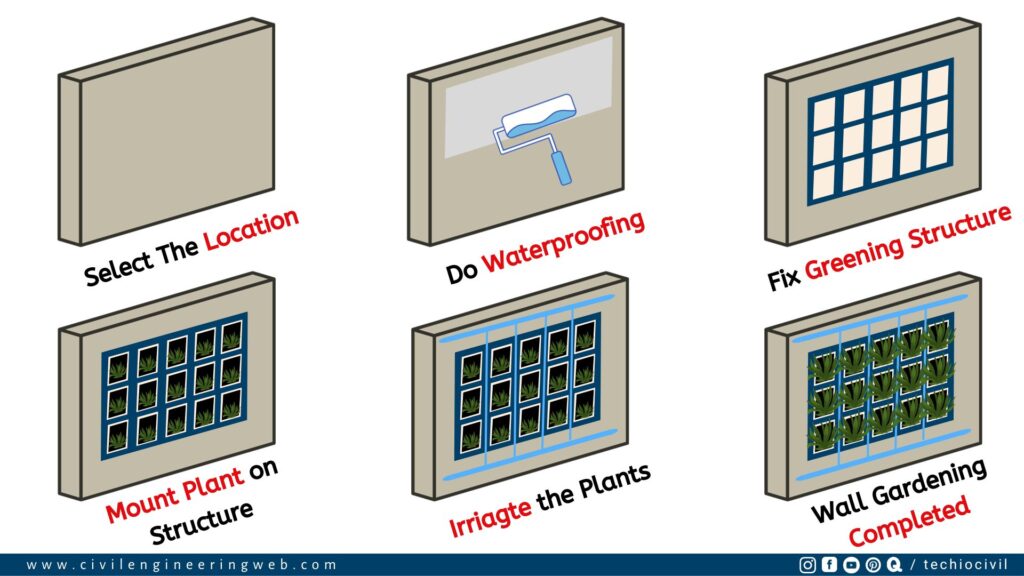
- Fix the Location
- Do water proofing
- Fix the greening system
- Mounting cups on the frame
- Irrigate the plants at initial and specific time interval
Vertical Pilers for Gardening
Vertical Piler is one of the best way to do vertical gardening or farming. To do Vertical pilers gardening, follow the steps as mentioned below.
- Cut the pipe at appropriate size
- Drill the holes at at similar interval
- Fill the pipe with gravel, sand, coconut pit with water
- Put the crops in holes of pipe without disturbing earth ball and roots
- Gives the water and nutrition at specific interval.
Also Read: 9 Way to Remove Insects From Home
See the video for more clarity and do it yourself at your home.
Other DIY Ideas for Vertical Gardening at Home
Here we shown the few other ways of vertical gardening/farming at your home which can be done from waste materials such as bottles, pipes, etc.
Frequently Asked Questions
What should I plant in a vertical garden?
The Pepromia, Syngoniums, Philodendron, Epipremnum, Pepromia, Begonia, Anthuriums, Chlorophytum, Pilea, Rheo discolor, Fittonia, Spathiphylum, Schefflera, etc. plants are used for wall gardening.
What are the benefits of vertical gardening?
Minimize the water consumption, lower the inner temperatures, reduce the UHIE Effect, good sound and thermal insulation, provide pleasent and healthy environment are the few major benefits of vertical gardening.
Can you grow vegetables in a vertical garden?
Yes, You can easily grow the vegetables like tomato’s, peas, green bean, cucumber, etc.

